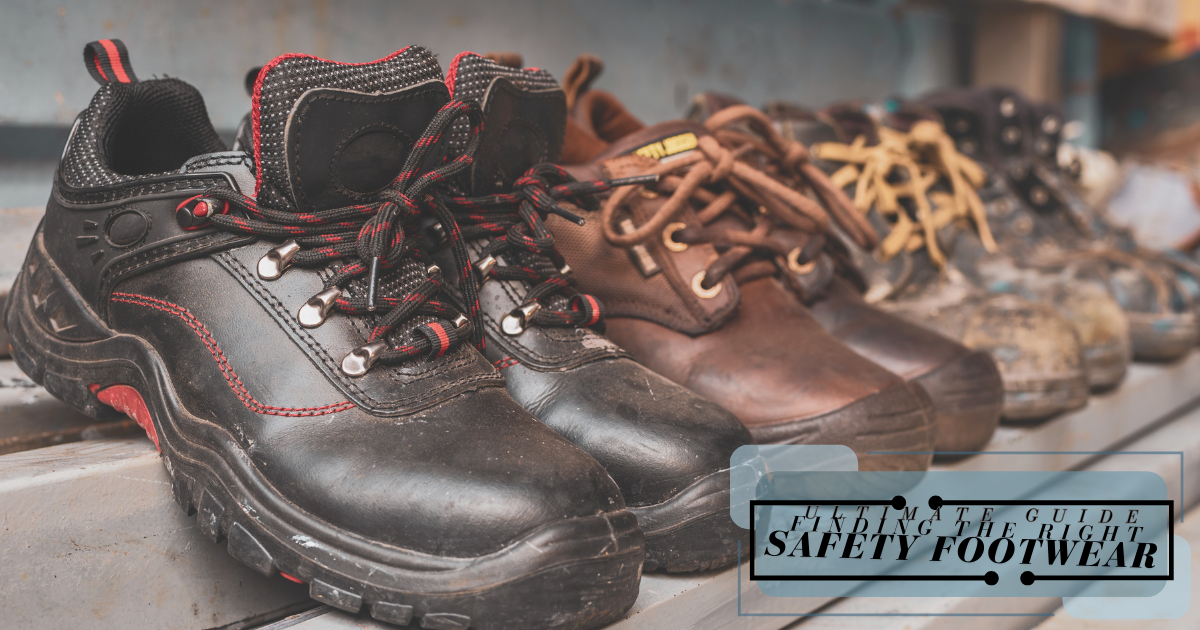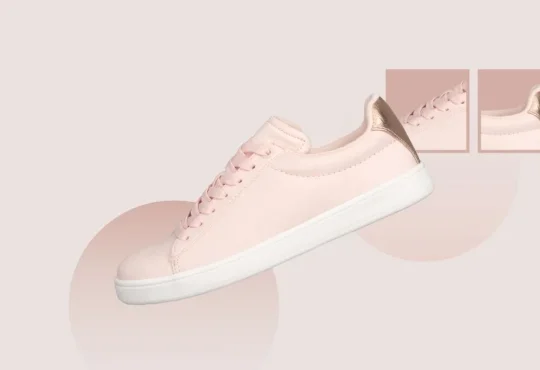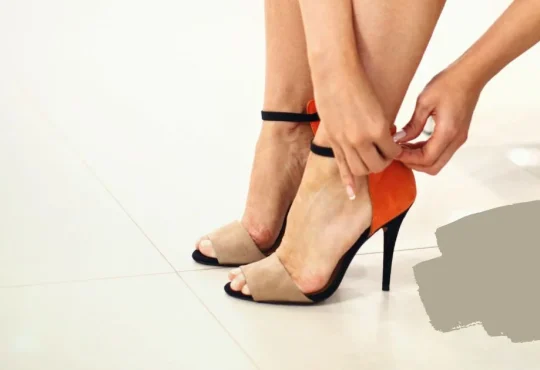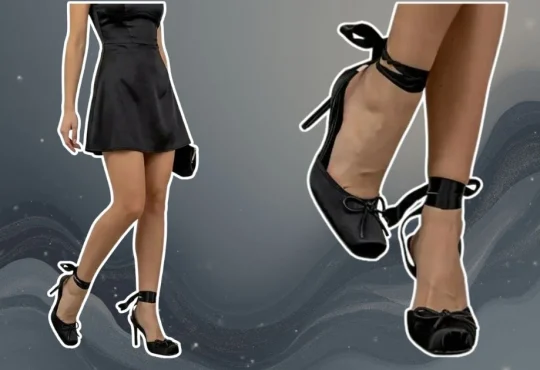
Every day, countless people suffer from injuries that could have been prevented with the proper footwear. Picture a worker on a slick factory floor or a nurse on her feet for twelve hours—without appropriate shoes, their safety and comfort are at serious risk. About 25% of workplace injuries are related to foot issues or slips, often due to inappropriate footwear. The right shoes enhance comfort, prevent accidents, reduce strain, and promote long-term health. From the job site to the hiking trail, choosing the right footwear means choosing safety. This guide covers what you need to know to make informed choices, covering essentials for work, sport, and everyday wear. Let’s dive into how the right safety footwear can protect your feet—and much more.
Understanding the Importance of Proper Footwear
Wearing improper footwear doesn’t just affect your feet—it can impact your entire body. Poorly chosen shoes can throw off your posture, causing your body to realign in ways that strain muscles and joints. This can lead to fatigue and discomfort that you might feel from your feet up to your neck. Additionally, shoes’ lack of proper support or cushioning often results in uneven weight distribution, worsening joint pain and making even simple movements more taxing. Here are some of the risks associated with poor footwear choices:
Increased Risk of Falls and Accidents
Slips, trips, and falls are some of the most common causes of injuries, especially in workplaces with frequent hazards like wet floors or uneven surfaces. Wearing footwear without adequate traction or stability increases the risk of these incidents. Shoes with smooth soles or worn-out tread provide minimal grip, making it easy to lose balance on slick or unstable surfaces. In professions that require moving quickly or carrying heavy items, the lack of proper footwear can lead to severe injuries, from ankle sprains to more critical fractures. Choosing shoes with slip-resistant outsoles can significantly reduce the chance of these preventable accidents.
Foot Pain and Discomfort
Ill-fitting or unsupportive shoes can lead to foot ailments beyond simple discomfort. Shoes that are too tight or too loose create friction, resulting in painful blisters, corns, and calluses. Over time, constant pressure and lack of support can aggravate conditions like plantar fasciitis, a painful inflammation of the tissue connecting the heel to the toes. Wearing shoes without adequate arch support can also increase foot fatigue, making it difficult to walk or stand for extended periods. For those who spend long hours on their feet, the discomfort can build up, leading to chronic pain that affects daily life.
Long-term Health Issues
The impact of improper footwear doesn’t stop at your feet—it can radiate throughout your body. When shoes lack proper support, the strain on your feet often shifts to your knees, hips, and lower back, resulting in joint and muscle pain. Poor footwear can also contribute to issues with gait and posture, forcing your body into unnatural positions to compensate for the lack of stability. This misalignment often creates chronic pain in the lower back, neck, and shoulders. Over the years, these accumulated effects can worsen, challenging everyday tasks and potentially leading to mobility issues in later life. Investing in well-designed footwear can help prevent these long-term problems.
Key Factors to Consider
Choosing the proper footwear is essential for style and protecting your overall health and well-being. A well-fitted shoe can make all the difference in supporting your body, preventing injuries, and providing comfort for hours. When choosing footwear, several critical factors can affect safety, comfort, and durability:
- Fit: Getting the right size and width is essential. Too tight shoes restrict blood flow, while loose shoes create instability. Try on footwear later in the day (when feet are usually a bit swollen) and with the socks you intend to wear with them.
- Support: Good footwear provides arch support, heel cushioning, and stability. Depending on your foot type (flat, neutral, or high-arched), you may require different levels of support. Proper arch support can alleviate foot fatigue and reduce leg and back strain.
- Traction: The outsole (bottom of the shoe) plays a crucial role in preventing slips and falls. Shoes with rubber or slip-resistant outsoles are ideal for wet or oily surfaces. Footwear with deep lugs and grooves provides extra grip, especially in rugged outdoor conditions.
- Material: The material affects durability, breathability, and water resistance. Leather and synthetic blends are famous for durability in work shoes, while mesh and lightweight fabrics are great for athletic shoes because they allow better air circulation.
Choosing the Right Footwear for Specific Activities
Different activities require specific footwear features. Here are some considerations for choosing shoes for work, the gym, or daily errands.
Work Footwear
Having the right footwear is critical for jobs requiring physical labor or a lot of standing. Proper work shoes can protect your feet from hazards, provide much-needed support, and help prevent injuries that result from long hours on hard surfaces. In addition, suitable work footwear can reduce fatigue, allowing you to stay focused and comfortable throughout your shift. Investing in these quality work shoes is essential for safety, productivity, and overall well-being on the job.
- Safety Boots and Shoes: In workplaces like construction or manufacturing, safety boots with protective features (like steel or composite toe caps) are essential. Many industries have specific safety ratings for footwear (such as ASTM or OSHA standards) to ensure protection against hazards like impact, compression, and puncture.
- Choosing Footwear for Specific Industries: Each industry has unique demands, making it essential to select footwear tailored to the specific risks and requirements of the job. The right shoes can significantly improve safety and comfort, especially for those who work long hours or in hazardous conditions. Here’s what to look for in footwear across different fields:
- Construction: Boots should have steel or composite toe caps, sturdy ankle support, and slip-resistant outsoles. Waterproofing is also an excellent feature to have when working in wet conditions.
- Healthcare: Healthcare professionals are often on their feet all day, so lightweight, slip-resistant, and cushioned shoes are essential. Some healthcare shoes also feature antibacterial linings to reduce the risk of infection.
- Manufacturing: Shoes with electrical hazard ratings and puncture-resistant soles, in addition to toe protection, are necessary in environments with sharp objects or exposed electrical currents.
Athletic Footwear
Athletic footwear is designed to optimize performance and minimize injury based on the activity and individual biomechanics. The right pair of athletic shoes can provide essential support, enhance stability, and help you move confidently, whether running, lifting, or hiking. Choosing footwear specific to your sport or workout style improves comfort and reduces the risk of strain and injury.
- Running Shoes: Runners should choose shoes based on foot type and running style. For instance, those with flat feet may need stability shoes with arch support, while those with high arches may benefit from cushioned shoes. Look for lightweight, breathable materials and shock-absorbing midsoles to reduce impact.
- Cross-training Shoes: For activities like gym workouts, CrossFit, or high-intensity interval training, cross-training shoes offer versatile support and flexibility. They should have a stable sole for weightlifting and lateral support for multidirectional movements.
- Hiking Boots: Hiking requires durable boots with high traction, ankle support, and weather resistance. Look for options with Gore-Tex or waterproof linings for protection against wet conditions and reinforced toe caps for extra protection on rocky terrain.
Everyday Footwear
Choosing comfortable, supportive, and functional footwear can make a difference even for non-specialized activities. The right everyday shoes can reduce foot fatigue, improve posture, and prevent minor aches from becoming chronic issues. Whether running errands, commuting, or spending a day on your feet, quality everyday footwear can keep you comfortable and supported throughout all your activities.
- Comfortable and Supportive Options for Daily Wear: Shoes with cushioned insoles, proper arch support, and breathable materials are ideal for everyday wear. Orthopedic insoles or custom inserts can further improve comfort, especially for those who stand or walk for long periods.
- Stylish and Functional Footwear for Different Occasions: For those seeking both style and function, a variety of footwear brands blend aesthetics with supportive features. Consider shoes with a low, stable heel and cushioned insole when dressing up. Look for styles that prioritize ergonomics without sacrificing appearance.
Footwear Care and Maintenance
Investing in high-quality footwear is only half the battle—maintaining it ensures longevity and ongoing performance. Here’s how to care for your shoes properly.
Regular Cleaning and Maintenance
- Cleaning Techniques: Remove dirt and debris from your shoes regularly. Leather shoes can be wiped down with a damp cloth, while mesh or fabric shoes can often be spot-cleaned with mild soap and water. Avoid machine washing, as it can damage the structure and adhesives.
- Drying Methods: Always let your shoe air dry away from direct sunlight or heat sources, which can warp materials. Stuffing shoes with newspaper can help absorb moisture and maintain shape.
- Replacing Worn-out Components: Laces, insoles, and heel caps wear out faster than the shoe. Replacing these items can extend the lifespan of your footwear and maintain comfort and support.
Storage Tips
Proper storage is essential for preserving the shape and durability of your footwear, ensuring they remain in excellent condition for years to come. Here’s a detailed step-by-step guide to help you store your shoes effectively:
- Choose the Right Location:
- Find a Cool, Dry Place: Select a storage area that is cool and dry, away from direct sunlight or excessive heat sources. Exposure to heat can cause materials to break down, while humidity can lead to mold growth.
- Avoid Damp Areas: Avoid basements or other areas prone to moisture. If you live in a humid climate, consider using a dehumidifier in your shoe storage area to maintain an optimal environment.
- Clean Your Shoes Before Storing:
- Remove Dirt and Debris: Before putting your shoes away, take a moment to clean them. Use a soft brush or cloth to remove dirt, dust, and any residue that could harm the material.
- Dry Completely: Ensure your shoes are completely dry after cleaning, as moisture can promote mold and mildew. If necessary, stuff them with newspaper to help absorb any remaining moisture.
- Use Proper Storage Techniques:
- Keep Them Upright: Store shoes upright on a shoe rack or a shelf. This prevents the shoe’s structure from collapsing and helps maintain its shape.
- Avoid Heavy Stacking: Do not stack heavy items on top of your shoes, as this can cause warping and deformation over time. If space is limited, consider using clear bins or dedicated shoe boxes that allow for vertical storage without putting pressure on the shoes.
- Consider Using Shoe Trees or Inserts:
- Maintain Shape and Prevent Creasing: Consider using wood or durable plastic shoe trees for dress shoes and boots. These help maintain the shape of the boots and prevent unsightly creases from forming, especially in leather footwear.
- Combat Shrinkage: Leather shoes can shrink or deform when not stored properly. Shoe trees help to counteract this by keeping the leather taut and allowing it to breathe, which prevents cracking and preserves its quality.
- Organize by Frequency of Use:
- Keep Favorites Accessible: Arrange your footwear so that the shoes you wear most often are easily accessible. This saves time when getting ready and encourages regular use, which benefits the shoes’ longevity.
- Seasonal Rotation: If you have seasonal footwear, such as boots for winter or sandals for summer, consider rotating them out of your primary storage as the seasons change. Store out-of-season shoes in protective boxes to protect them from dust and damage.
- Regularly Inspect Your Shoes:
- Check for Damage: Every few months, inspect your stored shoes for signs of damage or wear, such as cracks in the soles or creasing in the upper materials. Resolve any issues quickly to avoid further deterioration.
- Refresh and Rotate: Periodically take your shoes out of storage to air them out. This helps maintain their shape and allows any lingering odors to dissipate.
Finding the Right Safety Footwear for Your Needs
The right safety footwear is crucial for preventing injuries, enhancing comfort, and improving performance across various activities. Essential factors to consider include fit, support, traction, and material, as different types of footwear—whether for work, athletics, or everyday use—have specific requirements that can significantly impact your well-being.Footwear should be seen as an essential part of safety, health, and quality of life, making it worthwhile to invest time and resources into finding the perfect pair. You are investing in your long-term health and comfort by prioritizing good shoes. Have a favorite pair of shoes that has kept you safe and comfortable? Share your experiences and tips in the comments below—your insights could help others discover the ideal footwear for their needs!



